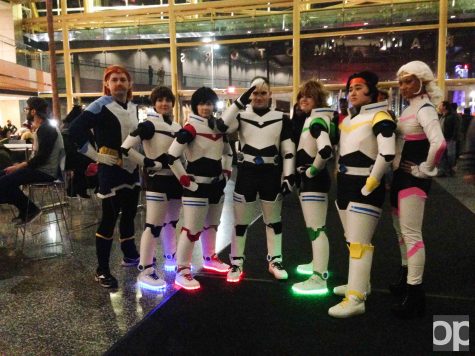Comic Books: Diversity
One of the truly great things about living in this day-in-age is the awakening of diversity in our society, the shining of positive light on what always should have been one of the most respected traits in the human race- uniqueness.
In the past few years we have seen the first black president come into office, transgender people recognized as having their own sex, and gay marriage legalized in the United States. This, of course, came with years of tears and bloodshed, disrespect for those who were a classified ‘minority,’ and negative stigma from almost every angle of pop culture.
Today, in 2015, things are slowly looking up for society as a whole, for people to not be afraid of whom they are, and (slowly as well) pop culture is beginning to follow along side. This is extremely prevalent in comics.
“Stan Lee,” father of many (if not most) of the most famous “Marvel Comics” characters, decided that in 1976, there should be a mainstream black comic book superhero. “Lee,” a young man from a Jewish family, understanding the feeling of being a ‘minority,’ created the “Black Panther,” the first African superhero to have his own book. From there, an evolution in storytelling began.
1992 brought about one of the first ever outwardly homosexual characters in comics- “Marvel’s” character “Northstar.” This brought about headlines from both sides of the ‘gay pride’ divide- those against the idea of a gay character in comics and those who support it- but nevertheless was a huge shake-up in the industry. “Northstar” would later bring about another first, with his being wed to his longtime partner, in 2012’s “Astonishing X-Men #51.”
“Marvel” again made changes in the comics’ world in 2000, creating a new line of series alongside normal continuity books, which recreated their “Marvel Universe” for the readers at the time, called the “Ultimate Universe.” In this world, after 11 years of publication, “Peter Parker, Spider-Man” bit the dust, being replaced by a half-black-half-Hispanic young man, named “Miles Morales.” This character became extremely popular (still to this day), proving that the public truly believes that anyone can be a superhero, regardless of race, even the great “Spider-Man.”
In 2011, both “DC Comics” and “Marvel Entertainment” relaunched their entire line of books, retconning a lot of continuity in favor of a new, modern one. This, for the first time, brought about the first ever homosexual characters to star in a mainstream comic book, and some even to have their very own series. “Batwoman,” in particular, was the first gay character to star in their own comic line.
“Green Lantern” of “Earth 2” was changed to be portrayed as a homosexual male who fights for good in response to his fiancés death, and long-standing characters “John Constantine,” “Catwoman,” and “Iceman” came out as being bisexual (John and CW) and gay (IM).
Old characters have also recently been replaced by other characters, in “Marvel Comics,” shaking up the amount of diversity in teams that were mostly filled by a bunch of white men, such as the “Avengers.” “Thor,” normally a Norse god, being a white man with long gold locks and blue eyes, has been replaced by a woman hammer-wielder, who also suffers from a degenerative disease when she isn’t in her goddess form.
“Ms Marvel,” originally a tall, busty white girl, has been replaced by “Kamala Khan,” a teenaged Pakistani-American, trying to get through life facing the adversities that come with being a superhero that isn’t a white, sexy idol. This book became so popular in its original run that it got on to the “New York Times Best Seller” list, in 2012, and “IGN’s People Choice Award” for ‘best new series.’
My personal favorite new diversely modified character is the “All-New Captain America,” Sam Wilson, AKA “Falcon.” This comic in particular plays with the problems a black man faces in the modern world, especially one thrust into a position usually occupied by white men. This series is also a critique on how far the world has come in the past twenty-years-or-so, and also how far it has yet to go. It also plays to show that these comic companies aren’t just making these changes to be ‘PC,’ but to build a world that is as unique and diverse as the one we live in, shining positive light into places usually bombarded with terrible stigmas and biting stereotypes.
The world may be attempting to rectify atrocities of the past, but it still has a hell of a long way to go. Luckily, it seems pop culture will be slowly moving along with it, providing new stories that bring diversity to the world in a positive way. So, here are a few great reading recommendations celebrating this change-
-Black Panther: Who is the Black Panther
– Astonishing X-men #51 “The Wedding of Northstar and Kyle”
*Hey, Post readers! Let me know what you think of these comic posts, as well as giving me suggestions on what to write on next! Please give me your suggestions! Tweet me, Ben Peterson, at: “@BenCPeterson7” on Twitter!



